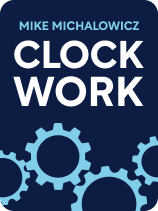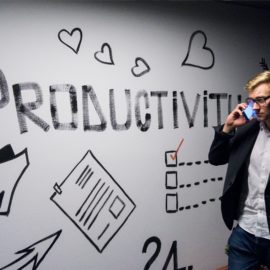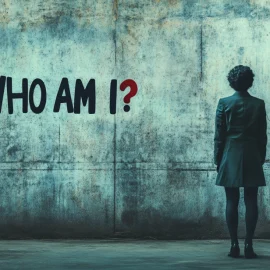

This article is an excerpt from the Shortform book guide to "Clockwork" by Mike Michalowicz. Shortform has the world's best summaries and analyses of books you should be reading.
Like this article? Sign up for a free trial here.
What are your project prioritization criteria? What are some things you should consider when deciding which tasks to prioritize?
Project prioritization involves identifying tasks that move your mission forward. Prioritize tasks that directly support the mission, eliminate tasks that don’t, and make tasks more efficient.
Here are two steps for accomplishing this.
Step 1: Identify the Critical Task
Project prioritization starts with identifying the one critical task you must prioritize above the rest: the one that’s essential to achieving your business mission. Identifying the critical task has two main benefits:
- First, identifying a critical task helps you actualize your mission. Your critical task makes your mission come true. Without it, your mission fails.
- Second, identifying a critical task instead of a critical person helps you abandon the idea that your hands-on involvement is necessary. A hands-off entrepreneur accepts that their employees are capable of handling the critical task.
(Shortform note: It may feel challenging to relinquish the ego-boosting notion that you’re the person who’s responsible for the critical task. How can you trust your employees’ abilities to handle the critical task? In The Power of Vulnerability, Brené Brown argues that you can develop trusting relationships by being vulnerable. When you’re vulnerable, you express your genuine emotions to others, such as your admiration for them. Vulnerability deepens your relationships with others, which builds trust. For example, when one of your teammates inspires you (for instance, they expertly handle an angry customer), tell them, “You handled that situation better than I would’ve! Nice work.”)
To identify your critical task, make a list of your company’s most important tasks. Then, imagine you must eliminate all of these tasks except for one. The one you keep is your critical task. For example, the critical task behind Storyline is retelling Spanish-speaking seniors’ life stories in both English and Spanish.
| How to Make an Ongoing Commitment to Your Critical Task In The One Thing, entrepreneur Gary Keller argues that after identifying your critical task, you must make an ongoing commitment to it. Otherwise, less important tasks will steal your attention away from your “One Thing” and you’ll fail to achieve your company’s mission.You can apply Keller’s advice about the One Thing to your business’s critical task. To commit to your critical task, first, you must deal with the discomfort of leaving other tasks unfinished. For example, as your business focuses on the critical task of retelling and translating senior citizens’ stories, accept that you may never achieve your hope of designing a highway billboard advertising your service. Second, Keller advises that you must turn down other opportunities that arise that don’t contribute to your critical task. For instance, imagine someone from your local library asks if you want to host an event there for seniors. You’ll have to decide whether this directly supports your critical task or would distract you from it. |
Step 2: Refine the Remaining Tasks
Next, Michalowicz advises you to ensure your company’s remaining tasks directly support the critical task (and, by extension, the company mission). By assigning your employees only essential tasks, you ensure they’ll be efficient, motivated, and independent. Tasks that strike your employees as “busy work” or feel tedious demotivate them and distract them from more mission-focused tasks.
To accomplish this, first, eliminate any tasks that don’t directly support the critical task. For example, imagine that historically, you’ve asked seniors to share several of their favorite recipes to include in their Storyline book. Eliminate this task, since it doesn’t directly support the critical task of retelling seniors’ life stories in English and Spanish.
(Shortform note: As you’re trying to build your employees’ motivation to effectively complete tasks, it may not be enough to just eliminate unnecessary tasks from their plates. It’s important to also justify to them the value behind the tasks you’re keeping. Some employees will feel most motivated to complete a task if they understand the purpose behind it and connect that purpose to their personal values. Any time you assign a new task, explain how it supports the mission and welcome employees’ questions about its purpose. Furthermore, get to know your employees—both their identities and their interests—so you can explain to them how tasks connect to their personal values.)
After eliminating unnecessary tasks, explore how to make the remaining tasks more efficient. For instance, imagine Storyline writers typically travel long distances to conduct in-person interviews with seniors to collect their stories. Make this task more efficient by switching to virtual interviews.(Shortform note: Another way to make your company’s tasks more efficient is to reduce unnecessary collaboration. Some leaders schedule too many collaborative meetings, and this over-collaboration contributes to employee burnout. To cut unnecessary collaboration, eliminate recurring meetings that have been canceled in the past, whether it was due to low attendance or a more pressing meeting happening instead. To make the remaining meetings more efficient, begin every meeting by sharing a clear agenda. Any time the discussion strays from the agenda, refocus it by reminding your team of the agenda.)

———End of Preview———
Like what you just read? Read the rest of the world's best book summary and analysis of Mike Michalowicz's "Clockwork" at Shortform.
Here's what you'll find in our full Clockwork summary:
- How you can take a four-week vacation as a small business owner
- How to avoid burnout as an entrepreneur
- Why a hands-on approach to leadership is usually not the best method






